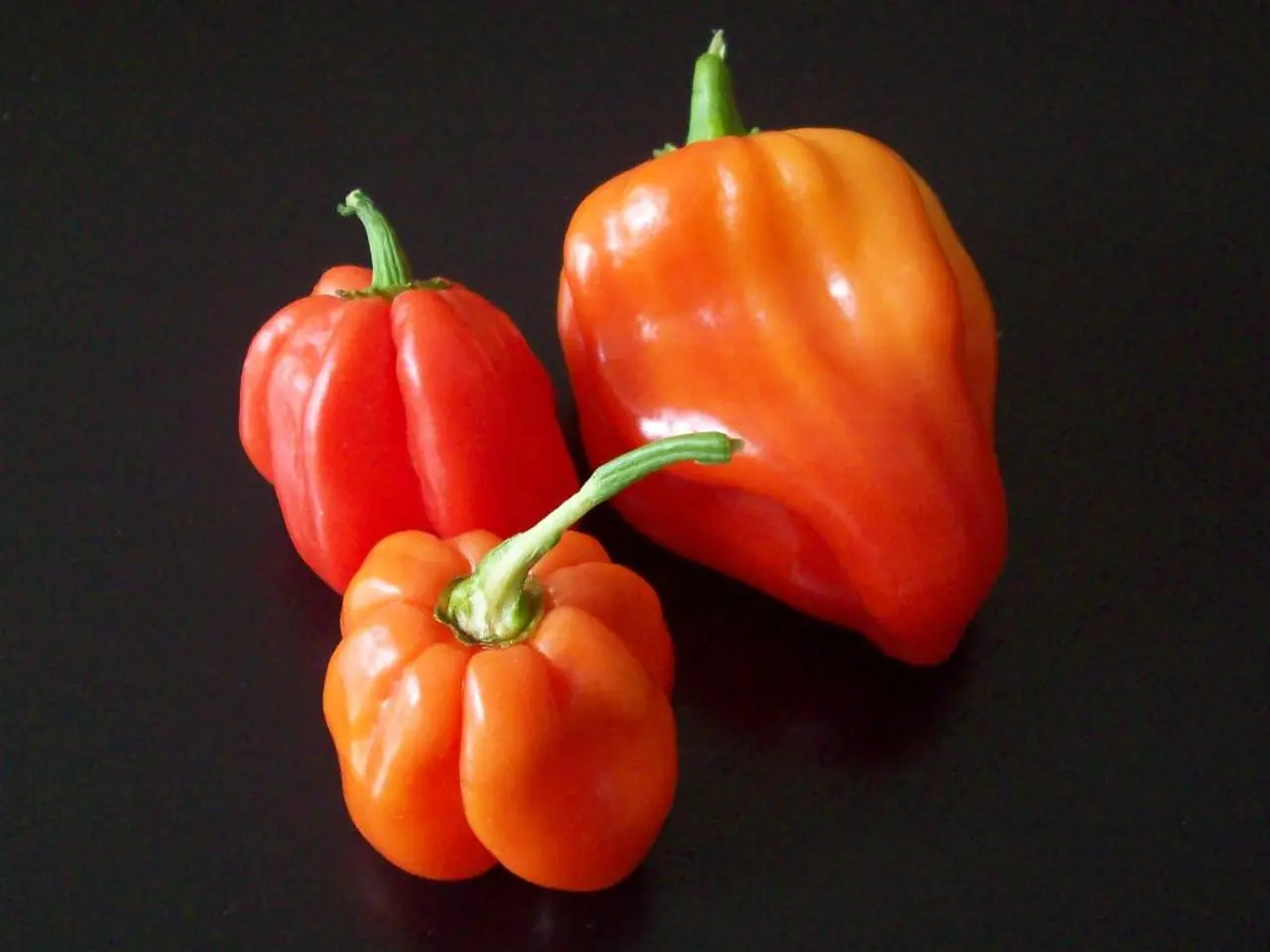Cultivating Sweet Peppers from Seeds: A Guide
Growing Your Own Sweet Peppers: Level Up Your Pepper Garden Game
Hey there, gardening enthusiasts! Ever wondered if growing sweet peppers could get any better? Well, brace yourself as we take your pepper planting experience to a whole new level. Lose the greenhouse worries—growing sweet peppers need only a warm, protected, and sunny spot!
Dive into the kaleidoscope of varieties and try 'Mohawk', 'Unicorn', 'Gypsy', and 'Carnival' peppers. These versatile plants are perfect for both outdoor and indoor gardening.
Gather Your Supplies
- Pepper seeds
- Peat-free, multi-purpose compost
- 7.5cm plastic pots
- 30cm pots
Allow about 30 minutes for the pepper planting journey!
Let's Get Planting
Fill pots with compost, leaving 1cm from the rim, then gently firm the soil to eliminate air pockets. Sow 4-5 seeds per pot, ensuring they are suitably spaced and not bunched up at the pot edge.
Cover seeds with a thin layer of compost or vermiculite and label your pots clearly. Water well using a watering can with the rose attachment, ensuring water drains from the pots before placing them in a heated propagator or sunny, well-lit window sill.
Caring for Seedlings
Once seedlings are 5-6cm tall, transplant them into individual 7.5cm pots filled with compost. Carefully lift the seedlings from their original pot and gently detangle their rootball. Create a hole in the compost of each new pot, drop the seedlings in, and secure the compost around the roots. Water the plants again and return them to the greenhouse or sunny window sill, maintaining moist compost.
As plants become pot-bound, gradually move them into larger pots filled with multi-purpose compost. Stop expanding pot sizes when your plants reach a 30cm pot. For outdoor gardening, acclimate plants to outdoor conditions in late May to harden them off. Stake support is recommended, considering the crop's potential weight.
Make Your Peppers Shine
When flowers appear, feed plants weekly with a high-potash liquid fertilizer, such as tomato fertilizer or comfrey solution. In dry conditions, lightly spray flowers with tepid water to boost fruit production. Keep watering but avoid overwatering, preventing waterlogged pots. Harvest peppers when they reach the size and color indicated on the seed packet.
Pro Tips
While the general tips mentioned should work for a range of sweet pepper varieties, specifics can vary. Always read seed packet instructions to ensure you meet the unique needs of each variety.
Where To Grow Your Sweet Peppers
To optimize growth, find a warm, sheltered, and sunny spot for your peppers. Don't forget the sun and warmth sweet peppers crave, as they thrive best in temperatures above 50°F (10°C) when gardening outdoors[1]. If starting seeds indoors, set the soil temperature around 75-90°F (24-32°C) for faster germination[1,5].
Aim for at least 6-8 hours of daily sunshine. Given the right conditions, you'll soon find yourself surrounded by a variety of vibrant, tasty sweet peppers for your enjoyment!
More like this:
- Learn the art of composting to make your own peat-free compost for your gardening needs.
- Discover the unique benefits and care tips for growing jalapeño peppers for spice lovers.
Enrichment Data
- Timing: Start seeds indoors 8-10 weeks before your last expected frost date for a strong start[1,3]. Soak seeds for 2-8 hours to speed up germination[1].
- Planting: Sow seeds about ¼ inch deep in seed-starting mix in containers. Maintaining soil moisture but avoiding waterlogging promotes proper growth[1].
- Germination: Ensure an ideal temperature of 75-90°F for prompt germination, typically taking 8-25 days[1,5]. Using a heat mat can help[1,5].
- Light: After sprouting, provide strong light to prevent legginess—a sunny window or grow lights work great[5].
- Hardening Off: When seedlings are 4-5 inches tall with true leaves, begin hardening off by gradually acclimating them to outdoor conditions for 6-8 weeks[3].
- Location: Opt for a sunny, disease-free spot for your garden that hasn't grown nightshade crops the previous year[3].
- Planting Outdoors: Transplant seedlings 2-4 weeks after the last frost date when the soil is warm[1,3]. Set plants aside in a protected area if temperatures drop to prevent frost damage.
- Harvesting: Pick peppers when full-sized and firm for the best flavor. Monitor closely during color transition, as mature peppers can deteriorate quickly[1].
Start experimenting with different varieties like 'Mohawk', 'Unicorn', 'Gypsy', and 'Carnival' peppers for an engaging home-and-garden lifestyle, growing them both outdoors and indoors. As you care for your seedlings and transplant them into larger pots, don't forget to provide adequate sunlight, warmth, and nutrients for vibrant, tasty sweet peppers that will elevate your lifestyle and home-and-garden setup.








